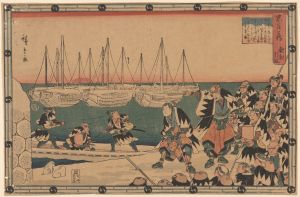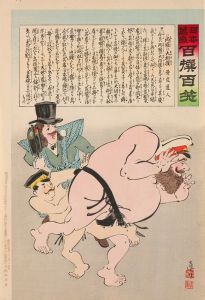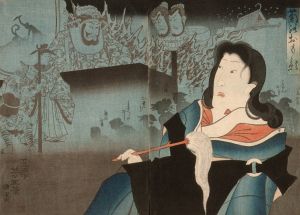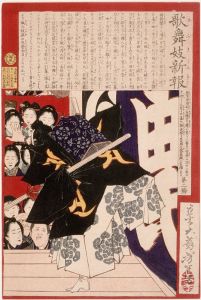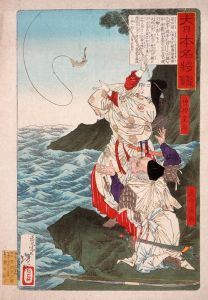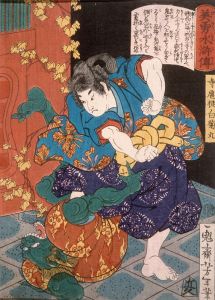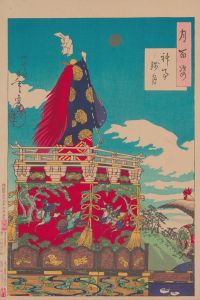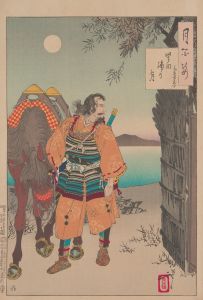
Ronin, or masterless Samurai, grimacing fiercely
A hand-painted replica of Tsukioka Yoshitoshi’s masterpiece Ronin, or masterless Samurai, grimacing fiercely, meticulously crafted by professional artists to capture the true essence of the original. Each piece is created with museum-quality canvas and rare mineral pigments, carefully painted by experienced artists with delicate brushstrokes and rich, layered colors to perfectly recreate the texture of the original artwork. Unlike machine-printed reproductions, this hand-painted version brings the painting to life, infused with the artist’s emotions and skill in every stroke. Whether for personal collection or home decoration, it instantly elevates the artistic atmosphere of any space.
"Ronin, or masterless Samurai, grimacing fiercely" is a woodblock print by the renowned Japanese artist Tsukioka Yoshitoshi. Yoshitoshi, born in 1839 and passing in 1892, was one of the last great masters of the ukiyo-e genre of woodblock printing and painting. His works are celebrated for their dynamic composition, dramatic expression, and innovative use of color and form, which marked a transition from traditional to modern art in Japan.
This particular print is part of Yoshitoshi's series "Tsuki hyakushi" (One Hundred Aspects of the Moon), which he created between 1885 and 1892. The series is one of Yoshitoshi's most famous and ambitious projects, consisting of 100 prints that explore various themes related to the moon, drawing from history, folklore, literature, and contemporary life. Each print in the series is accompanied by a short text that provides context or a narrative related to the depicted scene.
The subject of the print, a ronin, refers to a samurai without a lord or master during the feudal period of Japan. Ronin were often depicted in literature and art as figures of both tragedy and heroism, embodying the virtues of the samurai while also facing the challenges of living without the support and status that came with serving a daimyo (feudal lord). The image of a ronin grimacing fiercely captures the tension and inner turmoil associated with their status, as well as their resilience and determination.
Yoshitoshi's portrayal of the ronin is notable for its intense emotional expression. The fierce grimace suggests a moment of confrontation or deep personal struggle, a common theme in Yoshitoshi's work, which often delved into the psychological states of his subjects. The artist's skillful use of line and shading enhances the dramatic impact of the figure, making it a striking example of his mature style.
The "One Hundred Aspects of the Moon" series, including this print, reflects Yoshitoshi's deep interest in the human condition and his ability to convey complex emotions through his art. His work during this period is characterized by a blend of traditional Japanese aesthetics and a modern sensibility, which has contributed to his lasting legacy in the art world.
Yoshitoshi's prints were produced during a time of significant social and political change in Japan, as the country was transitioning from the Edo period to the Meiji era. This period saw the decline of the samurai class and the rise of a more modern, industrialized society. Yoshitoshi's work captures the tension between old and new, tradition and innovation, making it a valuable historical document as well as a work of art.
Today, Tsukioka Yoshitoshi is celebrated as one of the most important figures in the history of Japanese art. His prints, including "Ronin, or masterless Samurai, grimacing fiercely," continue to be studied and admired for their artistic merit and their insight into the cultural and historical context of 19th-century Japan.





